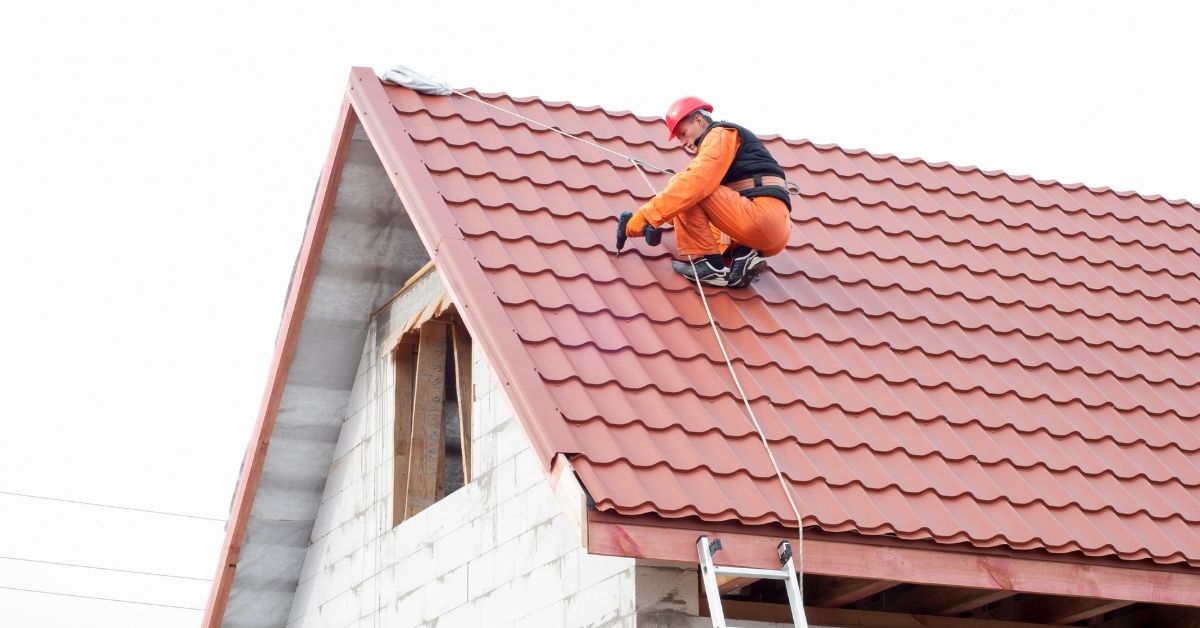If you are going to tear off and replace a roof, you need to know the roofing material types and costs. Though roof repairs are a lot cheaper, roof replacement costs could average around $11,500.
Your roofing cost is akin to your car’s engine cost. You get a sense of whether the price, in both cases, is normal or just out of the ballpark.
In the end, it boils down to components and labor, which drive roofing costs. To that end, you need to understand roofing materials and, therefore, their associated use costs.
Here, we provide a quick guide to roofing material prices. Keep reading to know more.
Table of Contents
Measure The Roof Area
To calculate roofing materials cost, one must first measure the roof area. The materials needed for roofing can vary widely depending on the size and shape of the roof. Measure the length and width of each side of the roof, then calculate the square footage of each side.
Multiply the square footage of each side by the appropriate number of squares needed, and add up the total square footage. From there, it’s simply a matter of multiplying the total square footage by the type of roofing material chosen and the cost associated with that material to arrive at the total roofing materials cost.
Identify Different Types of Roofing Materials
When calculating the cost of roofing materials, one must first identify the different types available. Common materials include asphalt shingles, metal roofing, slate tiles, clay tiles, wood shakes, and synthetic materials. Each type of material has its own unique characteristics and advantages, so it is important to select a type that best fits the roof and building.
Additionally, the cost of the materials can vary depending on the size and geographical region, quality, manufacturer, and other factors. Once the type of roofing material has been identified, then the price should be researched. A contractor should provide approximate prices of materials before installation to ensure the quality of the job.
Knowing the types of roofing material and understanding the cost of each type can make it easier to choose the right option for the project.
Consider The Slope Or Pitch Of The Roof
The slope is usually expressed in a ratio or as a percentage. For example, 8/12 means an 8-inch rise of the roof over a 12-inch run. The angle of the roof affects how much material is needed and, therefore, the cost.
The steeper the roof, the more material it will take, with the cost increasing for each pitch. Asphalt shingles, for example, require more for the same roof area if installed on a steep roof versus one with a shallow pitch. Slate, tile, and metal roofing materials usually cost more than asphalt shingles, regardless of the slope.
When calculating the roof area for material prices and the type to use, it is important to factor in the slope or pitch of the roof. This will help the roofer determine the most cost-effective materials and installation techniques.
Account For Waste And Additional Materials
When calculating the cost for any roofing materials, it is important to not only factor in the total square footage needed to cover the roof. Consider the account for any potential waste and additional materials. Roofing material prices vary by type and purchase location, so estimate the cost of the types of materials needed.
Next, estimate the amount of waste that will be generated from waste, cutting, and installation, typically about 5-10%. Additionally, estimate any additional materials, such as felt paper, metal flashing, and trim, that might be needed. After estimating the total cost for the materials, add the estimated percentage of waste and additional materials to get the total material cost.
Research discounts, such as those from trade organizations or for bulk purchases, to find ways to lower the overall roofing material prices.
Factor In Other Costs
To calculate roofing material prices and use costs, it’s important to factor in other costs. That includes the cost of tools and labor, labor rates, delivery and pickup, local taxes, and possible shipping and handling costs.
It is also important to factor in the cost of materials like shingles, felt, nails, and ridge cap. Check out Hook Agency’s Best Roofing Shingles to get the most out of your budget.
The cost of roof valley and flashing should also be considered, along with any risk factors related to labor and materials that may be included in the quote. Lastly, any permits or inspections that may be necessary in your area should be included in the calculation of cost. When determining which roofing material and cost to use, it is important to factor in these costs to make an informed decision.
Use Online Calculators for Roofing Material Prices
Using online calculators for calculating roofing material prices is a great way to save time and money. Start checking online calculators that list roofing materials and their prices for each material.
This will provide you with an estimate of what materials you need and the total cost. Use these estimates to compare prices and compare different materials to ensure that you are buying the best quality roofing materials for the least cost.
Calculating Roofing Material Prices
Calculating roofing material prices can be difficult, but it doesn’t have to be. By understanding how to determine the type of materials used, managing waste, and getting the best cost per roofing material, homeowners can save money and ensure the highest quality result. So, if you’re considering a roofing project, make sure to reference this helpful guide and start calculating today.
If you’re looking for more ways that will help you, bookmark our site now and come back for more insights and valuable information!



